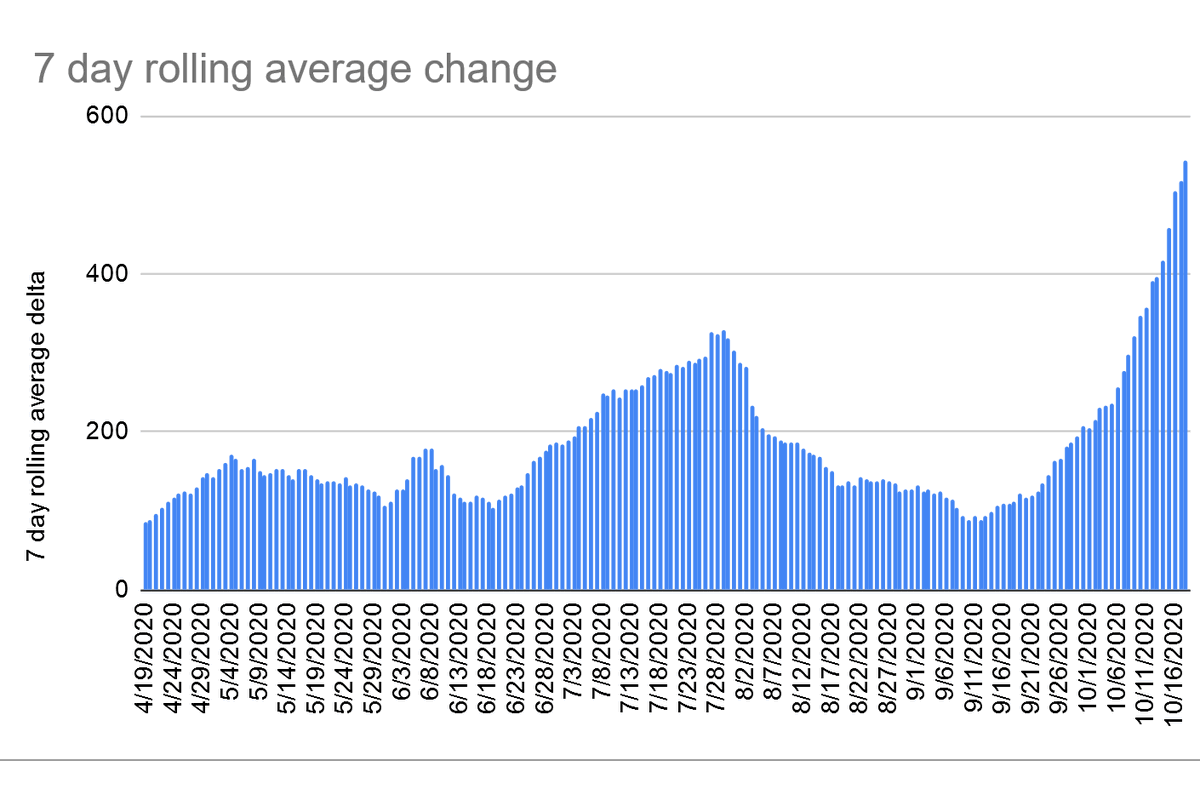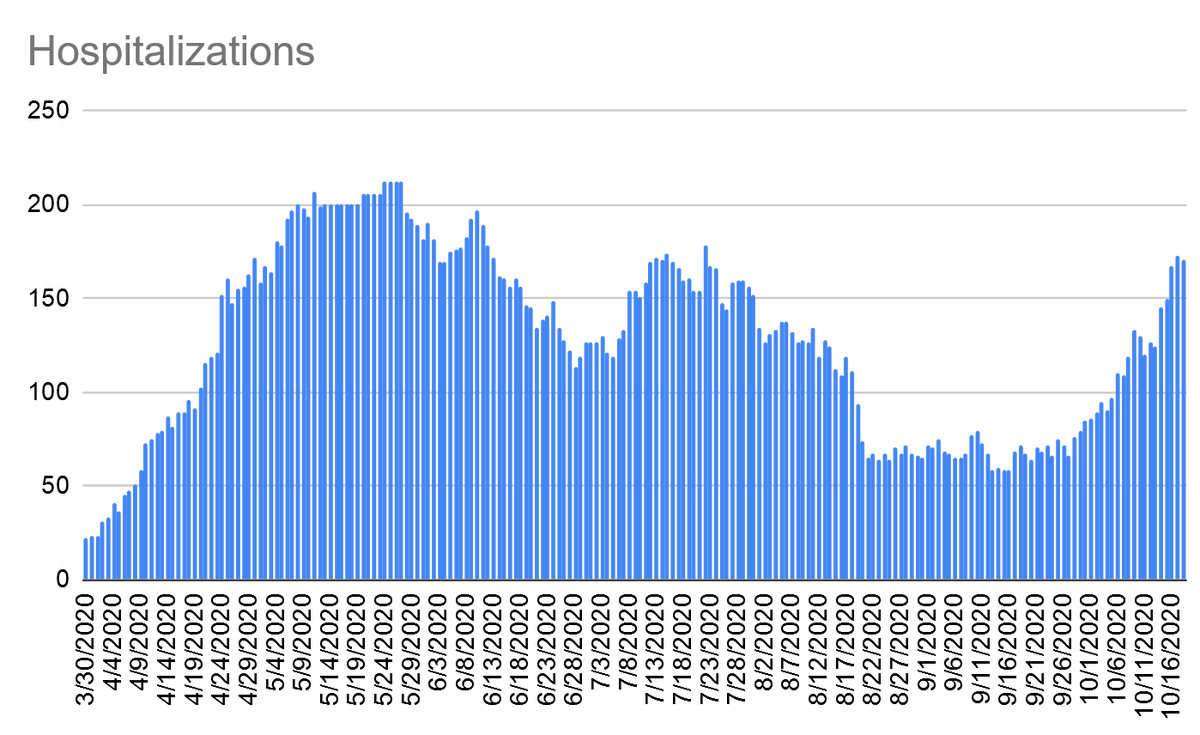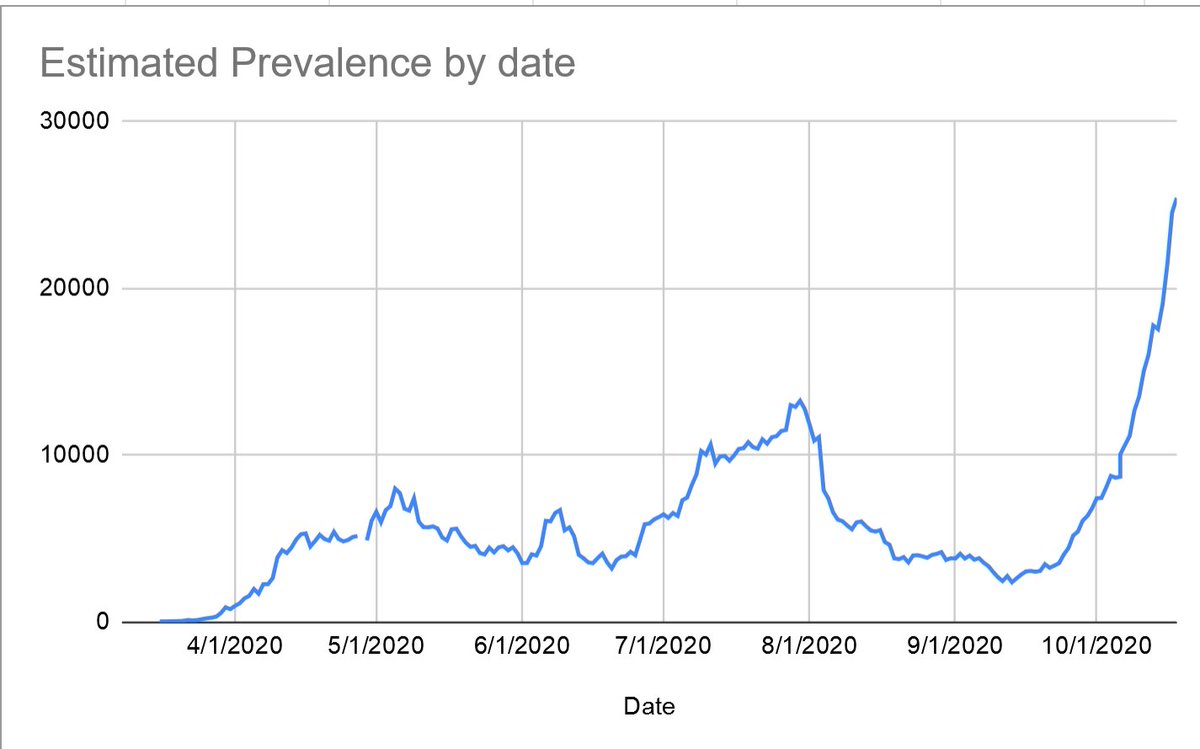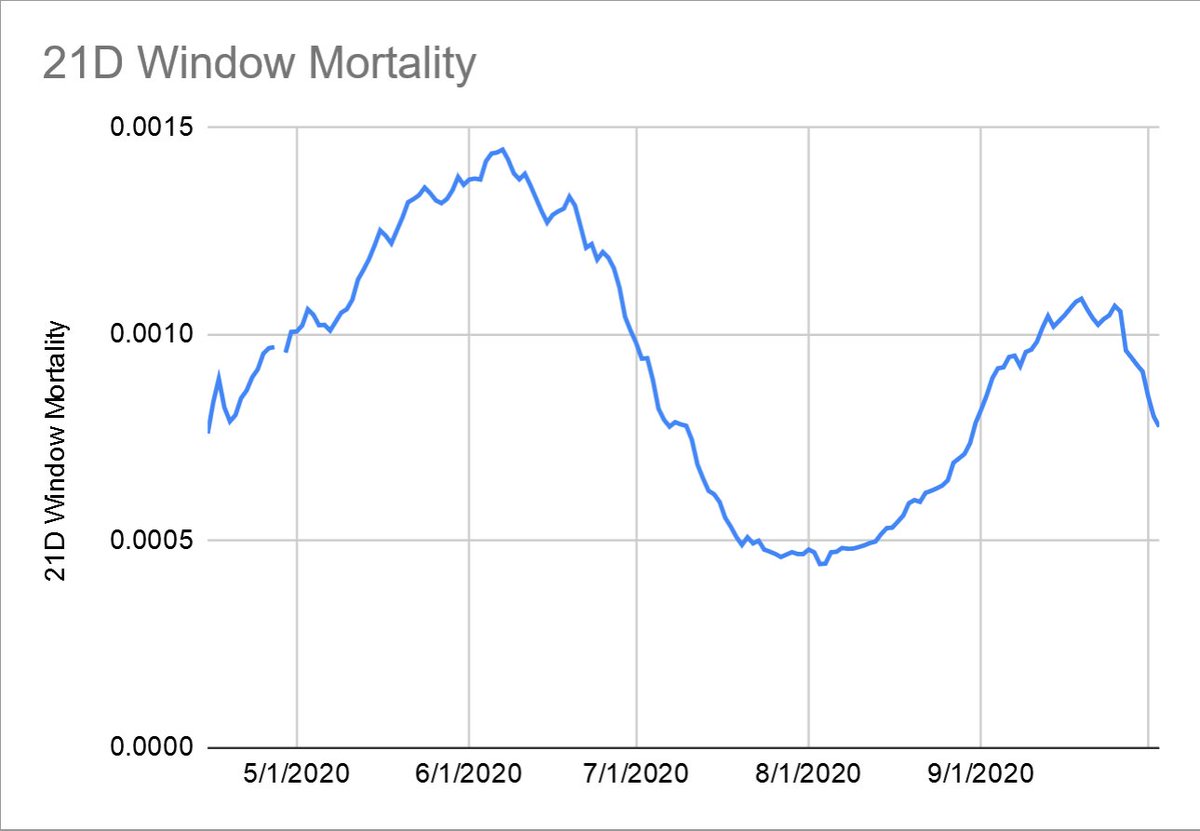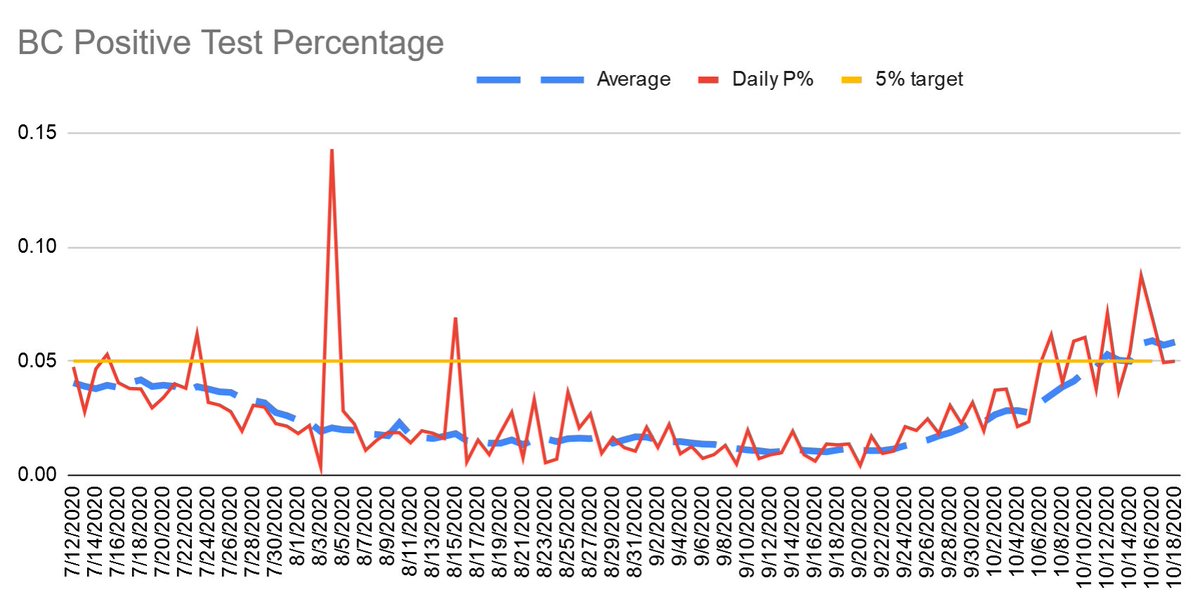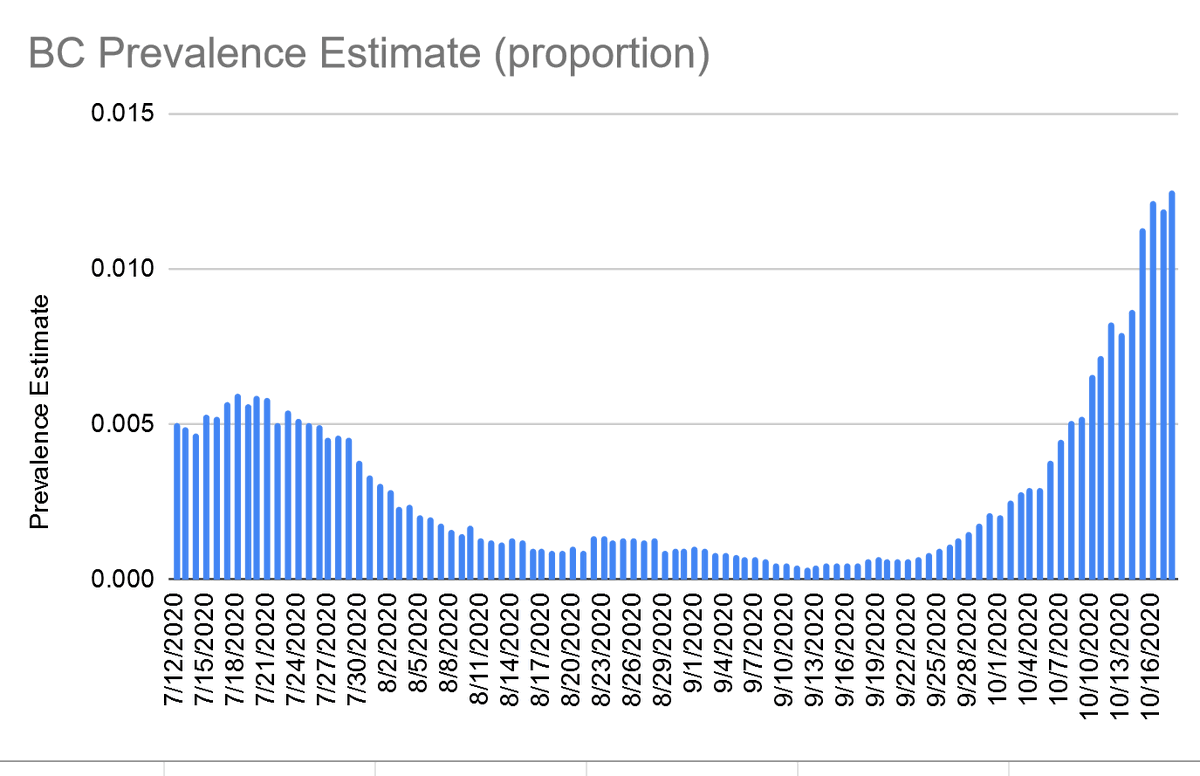10/18/2020 NM COVID-19 Report In the early 1970s, Nixon reported the good news that the rate of increase of inflation had gone down, recorded by some as the first time a third derivative was used in a political context; That& #39;s us today -- the rate of increase of cases is down.
NM COVID-19 in long term care. Every state (and country) that was hit early had an exceptionally grave death toll in care homes. 28% since the beginning and 20% since June of NM COVID-19 deaths were in nursing homes; 25% of deaths overall are in nursing homes in the US.
This is a dervied graph I don& #39;t see anywhere; this is the proportion of deaths per case day, estimated by Blake/Ellis (higher weighting for high positive percentage. This shows (a.) a 40% reduction in maximum fatality since April and (b.) a minimum of 50 per 100K daily
What do we make of this number? Here& #39;s one perspective. The danger of death for an infected patient in a single day is, at minimum, just under the murder rate over a whole year in the US city with the highest murder rate.
The US murder rate is 5 per 100K for a year, or .41 per 100K in a month. The COVID-19 death rate in South Dakota last month was 13.4 per 100K, and in NM it was 4.2 per 100K. Would people be cheering Kristi Noem for policies that increased the murder rate 30-fold?
10-18 Bernalillo County/ABQ COVID-19 Test rates seem to be clawing back to 5%, thought Sunday is always an odd sample. "Danger Diner" metric -- chance of a COVID-19 case in 50 randomly drawn people -- stays at 45 %. Short term pattern REALLY looks like a peak.
A national response perspective: I propose defining five categories of effectiveness in countries hit hard after February (so not CHN, ITA, Belgium, Iran mostly): American (CAN-Argentina), Atlantic (NJ-New England, UK), European (E.U. - Spain), Asia Pacific, and Africa.
The Asia-Pacific Response is 100% masking, agressive tracking, actually quarantine people, even away from family, and reopen when community spread is zero. The death rate from this is EXTREMELY low ( < 15 per million), econ. impact depends of severity of epidemic.
The American response is partial to complete closure of the economy until hospitals are clearly not full, and then widespread but much lower closure with light masking while hospitals remain open; it brings high death rates (100s per million) and 5-15% loss of GDP.
The Atlantic response is like the American response, except widespread shutdown happens when infection risk rises instead of hospitalization. Since June, this yields 20% loss of GDP and 10s of deaths per million, both depending on severity.
The European response is to lock everything down, and reopen regionally only when case rate is very low (less than 10 daily per million, pos < 1%), and slam the doors regionally when those boundaries are crossed. This brings 1-5 deaths per million (since June), losing 5-20% GDP.
The African response (to be more accurate the sub-saharan african response) seems to involve near total local quarantine when cases are pronounced, and often low tech but very intensive contact tracing. By many measures, it is the best in the world https://apnews.com/article/virus-outbreak-ghana-africa-pandemics-donald-trump-0a31db50d816a463a6a29bf86463aaa9">https://apnews.com/article/v...
We have 18-30 months of COVID-19 response left. I think we can see that no country should choose the American or the Atlantic response if they have any choice (and a high-tech country like the US does). And that applies to any version.
Obviously, I would love the US and Europe to beat COVID-19 like NZ, Korea, and Japan did. NZ and Japan are islands, Korea is practically an island, and Korea and Japan likely have some crossover immunity from SARS and Corona colds. We can learn from them, but we can& #39;t copy them.
(US going forward0 NO current us response is defensible. People praising Kristi Noem against MLG are saying that it& #39;s awesome to have 4 times the death rate (30 times the US death by murder rate) to get 10-20% better employment performance; that& #39;s silly, and monstruous.
(US going forward). On the other hand, we can& #39;t say we should do what MLG initially did the whole time. It saved lives, especially in the spring, but 2-3 years of it can& #39;t happen, because PEOPLE. WONT. DO. IT. Not even MLG is trying to do that.
(US going forward). I can& #39;t even make pretty graphs, so I can& #39;t produce an answer. But it seems like European leaders can. Europe is having a big spike now, but death rates are much lower than ours, and they are continuous improving, bouncing back from new surges.
(End of ridiculously long thread) Some things definitely don& #39;t cause spikes (stores at 50% capacity with masks), we can do those things forever, and roll back other activities as cases surge, using faster testing. The key question is: how fast can we bounce back? Tune in later..

 Read on Twitter
Read on Twitter